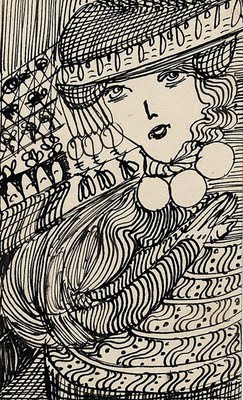Archive for
“Dearest Pontius,” Isabella told me. “Los Angeles is not that inspiring.”
The narrative is evident. Inspiration left before the momentum built and 1 Car per Green ended almost before it began. I thought I’d give it all up until one day (like any other day) I came across a stack of World of Interiors from the 90’s where I was happily dropped into a Paris Apartment by Jean Dunand. Here it was photographed in it’s pristine original condition untouched–as they say– by time.
The gold leaf still bright, the rabbit fur sofa and bed spread pristine and white. The Living room was my favorite, silver and pale blue and gilt. Chairs exquisite turned into graceful serpentine curves. Sigh. Who says context is not decisive? Living in this kind of apartment, one would become a different person. It would inspire a sartorial lift! One would act on a new stage preparing lines for a new play.
One of my favorite design books is “Decorating is Fun!” In it, Mrs. Draper shares a charming story of the transformation of one of her clients.As I recall it, the client is a young single woman who has newly inherited a frumpy & plain apartment. She herself is frumpy and plain. She is without prospects and in comes to Mrs. Draper for a little help, and how. From the redecoration of the apartment, the young lady goes through her own personal redo. She starts going to the hairdresser. She starts to wear make up. She takes an interest in her clothing. People start to take an interest in her! Before you know it she tosses out her glasses and is engaged to be married.
It’s the intrigue of the environment which I have seen myself. In London I worked for the stylish decorator, Gillian Rogerson. There was a client coined, Miss Grey.
Miss Grey’s whole apartment was grey: the walls; the curtains; the carpet; the furniture. She wore grey clothes. She had grey hair and even grey eyes. At first, she only considered grey, but after about a month inspired by Ms. Rogerson’s own flair one day Miss Grey appeared with alacrity at the door to answer the bell in bright red lipstick a pale blue sweater and pearls, smiling.



















